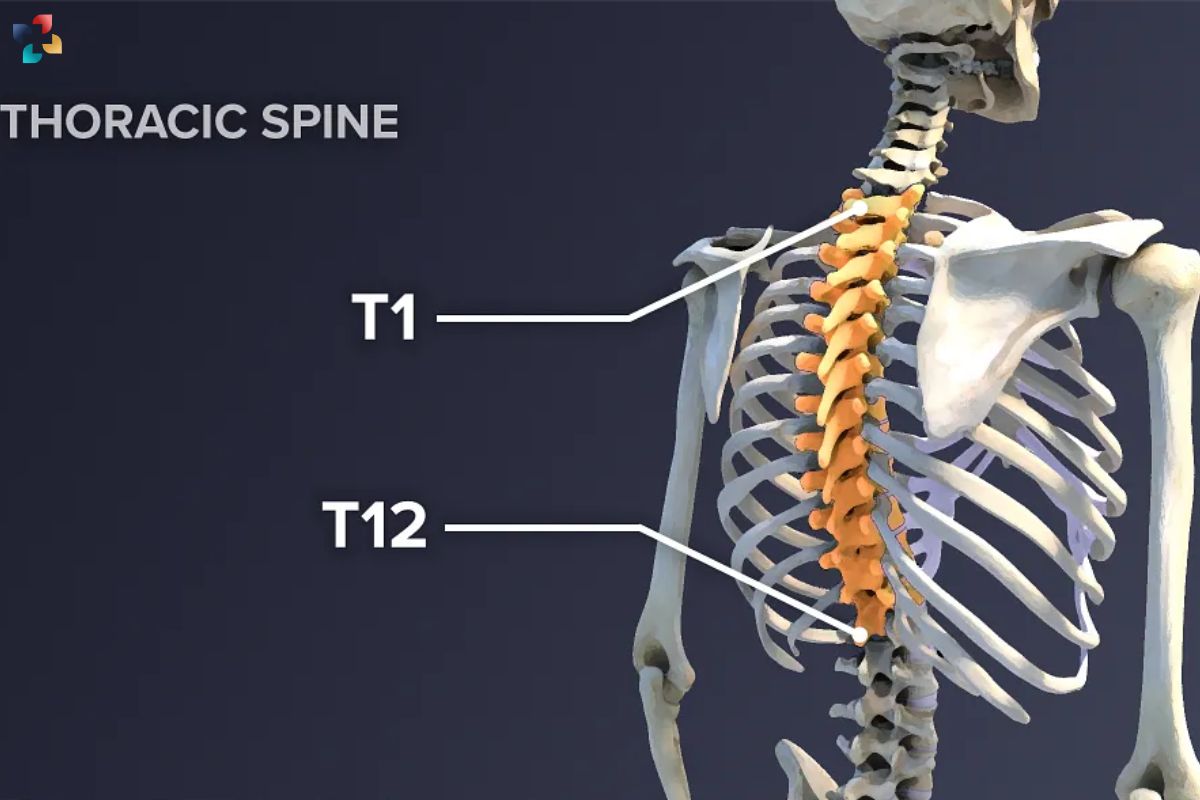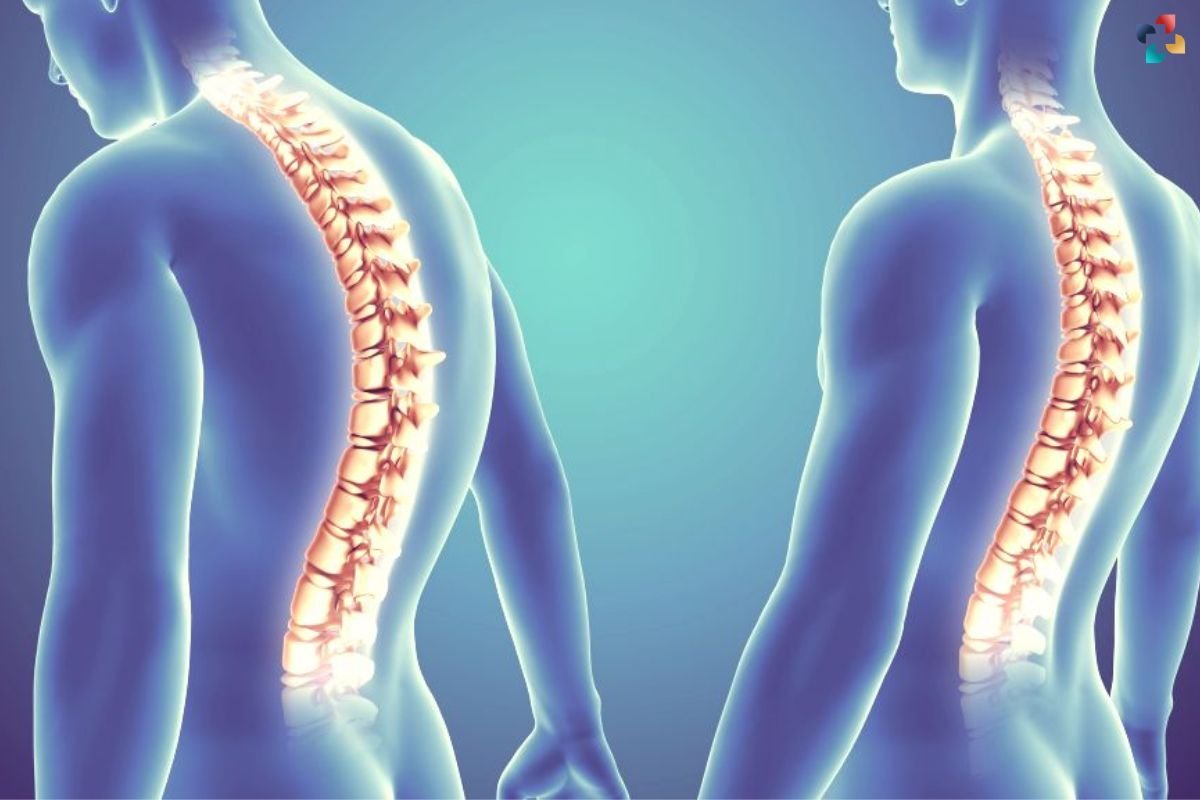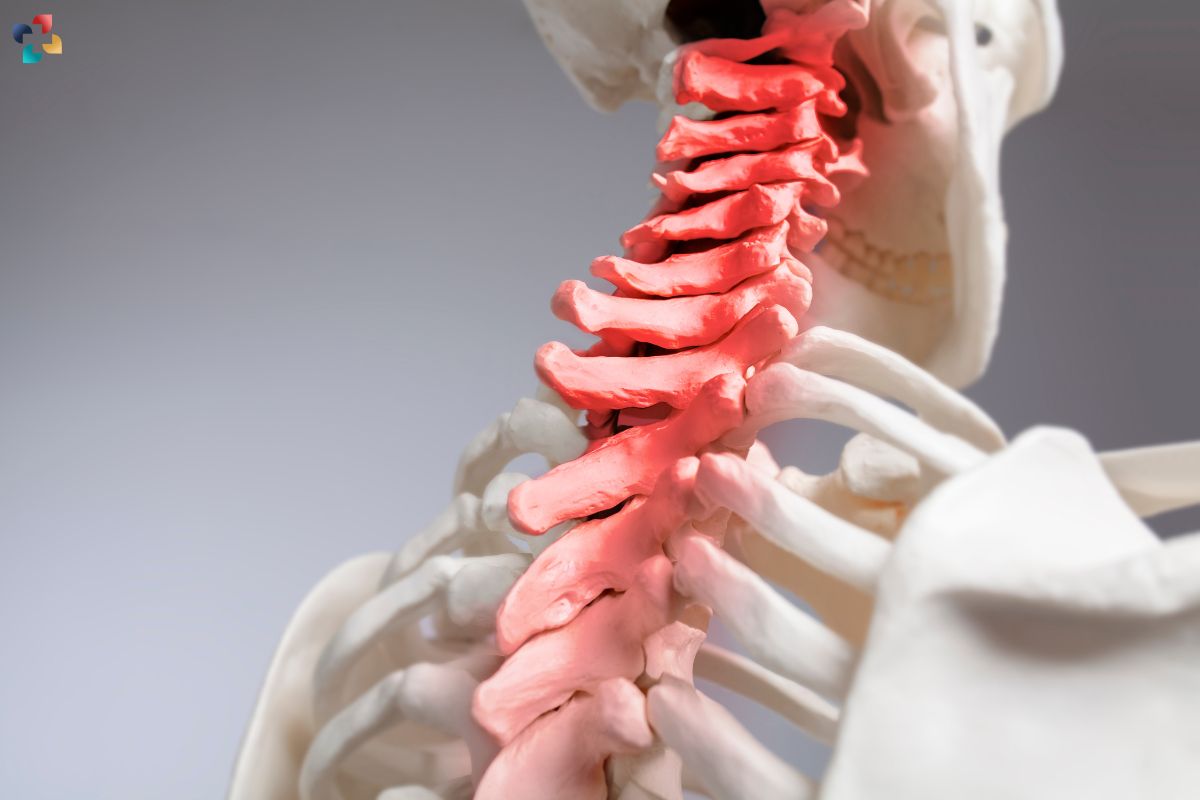The thoracic vertebrae are a crucial part of the vertebral column, providing structural support and protecting vital organs. These twelve vertebrae, located in the middle segment of the spine, play a significant role in our overall spinal health. This article delves into the anatomy, function, and common disorders associated with the thoracic vertebrae, offering a comprehensive guide to understanding this vital component of the human body.
Anatomy of Thoracic Vertebrae
1. General Structure
The thoracic vertebrae are twelve in number, labeled T1 through T12. Each thoracic vertebra has several components:
- Vertebral Body: The thick, disc-shaped anterior portion that bears weight.
- Vertebral Arch: Formed by the pedicles and laminae, it encloses the vertebral foramen.
- Spinous Process: A bony projection off the posterior of the vertebral arch, palpable through the skin.
- Transverse Processes: Extend laterally from the vertebral arch and serve as attachment points for muscles and ligaments.
- Articular Facets: Superior and inferior facets that connect adjacent vertebrae and allow for controlled movement.
2. Unique Features
Thoracic vertebrae have unique features that differentiate them from cervical and lumbar vertebrae:
- Rib Articulations: Each thoracic vertebra has facets on the sides of the vertebral bodies and transverse processes for rib attachment.
- Heart-Shaped Bodies: The vertebral bodies of thoracic vertebrae are roughly heart-shaped.
- Long Spinous Processes: These processes point downward, overlapping the vertebra below, which limits the range of motion.
Function of Thoracic Vertebrae

1. Support and Stability
The primary function of the thoracic vertebrae is to provide support and stability to the upper body. They form the central part of the spine, bearing the weight of the head, neck, and upper limbs.
2. Protection of Vital Organs
The thoracic vertebrae, in conjunction with the ribs and sternum, create the rib cage. This bony structure protects vital organs such as the heart and lungs from external trauma.
3. Facilitation of Movement
Though the range of motion in the thoracic spine is more restricted compared to the cervical and lumbar regions, it still allows for essential movements such as rotation and bending. The rib attachments also aid in respiratory movements, facilitating breathing.
Common Disorders of Thoracic Vertebrae
1. Thoracic Kyphosis
Thoracic kyphosis is an exaggerated outward curvature of the thoracic spine, leading to a hunched back appearance. It can be caused by:
- Postural Kyphosis: Due to poor posture, common in adolescents.
- Scheuermann’s Disease: A growth disorder resulting in wedge-shaped vertebrae.
- Osteoporosis: Weakened bones can lead to vertebral compression fractures, causing kyphosis.
2. Thoracic Herniated Disc
A thoracic herniated disc occurs when the intervertebral disc between two thoracic vertebrae protrudes or ruptures, compressing spinal nerves. Symptoms include:
- Pain: Localized or radiating pain, often exacerbated by movement.
- Numbness and Weakness: In the torso or legs, depending on the affected nerve.
3. Thoracic Spondylosis
Thoracic spondylosis refers to the degenerative changes in the thoracic spine due to aging. These changes can lead to:
- Bone Spurs: Bony growths that can compress nerves and cause pain.
- Intervertebral Disc Degeneration: This leads to loss of disc height and flexibility.
4. Compression Fractures
Compression fractures occur when a vertebra collapses due to trauma or osteoporosis. These fractures can cause:
- Severe Back Pain: Especially upon movement or pressure.
- Height Loss: Due to the collapsing of vertebral bodies.
- Kyphosis: Worsening the curvature of the spine.
Diagnosis of Thoracic Vertebrae Disorders

1. Physical Examination
A thorough physical examination is the first step in diagnosing thoracic vertebrae disorders. This includes:
- Inspection: Observing posture and spinal alignment.
- Palpation: Feeling for tenderness, deformities, or muscle spasms.
- Range of Motion Tests: Assessing the flexibility and movement of the thoracic spine.
2. Imaging Studies
Imaging studies provide detailed views of the thoracic vertebrae and help in identifying structural abnormalities.
- X-Rays: Useful for detecting fractures, alignment issues, and degenerative changes.
- MRI: Provides detailed images of soft tissues, including intervertebral discs and spinal cord.
- CT Scans: Offer cross-sectional images that help in assessing bone structures and any potential lesions.
3. Neurological Tests
Neurological tests evaluate nerve function and help in identifying any nerve compression caused by thoracic vertebrae disorders.
- Reflex Tests: Checking for abnormal reflexes indicating nerve damage.
- Sensory Tests: Assessing sensitivity to touch, pain, and temperature.
- Motor Tests: Evaluating muscle strength and function.
Treatment of Thoracic Vertebrae Disorders
1. Conservative Treatments
For many thoracic vertebrae disorders, conservative treatments are effective in managing symptoms and promoting recovery.
- Physical Therapy: Strengthening and stretching exercises to improve posture, flexibility, and muscle support.
- Medications: Pain relievers, anti-inflammatory drugs, and muscle relaxants to manage pain and inflammation.
- Bracing: Using a back brace to provide support and prevent further deformity in cases of kyphosis or compression fractures.
2. Interventional Treatments
When conservative treatments are insufficient, interventional procedures may be necessary.
- Epidural Steroid Injections: Reducing inflammation and pain by delivering steroids directly into the epidural space.
- Vertebroplasty and Kyphoplasty: Minimally invasive procedures to stabilize compression fractures and restore vertebral height.
3. Surgical Treatments

In severe cases, surgical intervention may be required to correct structural abnormalities and relieve nerve compression.
- Discectomy: Removing a herniated disc that is compressing spinal nerves.
- Spinal Fusion: Fusing two or more vertebrae together to provide stability and correct deformities.
- Decompression Surgery: Removing bone spurs or other structures compressing the spinal cord or nerves.
Preventing Thoracic Vertebrae Disorders
1. Good Posture
Maintaining good posture is essential for preventing thoracic vertebrae disorders. Proper ergonomics while sitting, standing, and lifting can reduce the risk of developing issues.
2. Regular Exercise
Engaging in regular exercise, including strength training, flexibility exercises, and aerobic activities, helps maintain spinal health and prevents degenerative changes.
3. Bone Health
Maintaining strong bones through adequate calcium and vitamin D intake, along with regular weight-bearing exercises, can prevent osteoporosis-related fractures.
4. Avoiding Trauma
Taking precautions to avoid traumatic injuries, such as wearing seat belts, using proper lifting techniques, and ensuring a safe home environment, can prevent fractures and other injuries to the thoracic vertebrae.
Conclusion
The thoracic vertebrae are a vital component of the spinal column, providing support, stability, and protection to the upper body and vital organs. Understanding the anatomy, function, and common disorders of the thoracic vertebrae is essential for maintaining spinal health and addressing any issues that arise. Through proper diagnosis, treatment, and preventive measures, individuals can manage thoracic vertebrae disorders effectively and maintain a healthy, active lifestyle. As our understanding of spinal health continues to evolve, ongoing research and advancements in medical treatments promise improved outcomes for those affected by thoracic vertebrae conditions.

3 Ways to Keep Your Back Healthy and Steer Clear of the Spine Surgeon
Back pain is a common problem that affects millions of people, with surgery being a last resort for chronic or severe cases. In this article, we will explore three effective ways to keep your back healthy and avoid the need for spine surgery.











